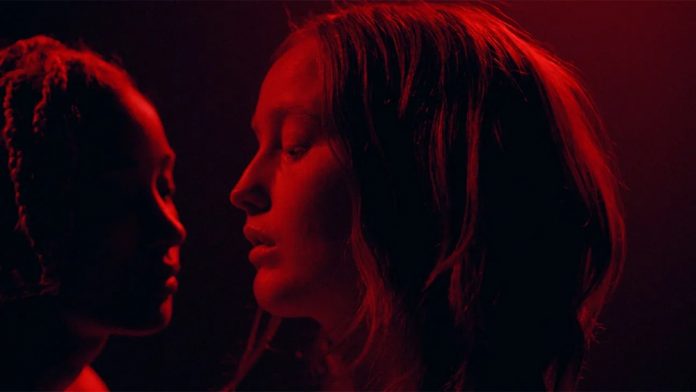Earlier this year at the Sundance Film Festival, I caught the supernatural love story My Animal and came away impressed by the performance of its trans non-binary star, Bobbi Salvör Menuez (Euphoria). Menuez plays Heather, a young woman living in a small, snow-covered town where she’s tormented by a family curse. When she starts to fall for the rebellious Jonny (Amandla Stenberg), Heather finds herself tempted to explore her suppressed desires and unleash her inner animal.
The “lesbian werewolf movie,” as it became known in Park City, hails from director Jacqueline Castel and screenwriter Jae Matthews, the latter of whom recruited her Boy Harsher bandmate Augustus Muller to compose the film’s rad ’80s synth score.
Rather than get acquired by Shudder or IFC Films, it was Paramount Worldwide Acquisitions Group that actually bought My Animal out of Sundance, sensing that young audiences might spark to the queer romance at the center of the film, which is more concerned with exploring the relationship between Heather and Jonny than werewolf movie tropes. That’s by design, of course, as My Animal is more of a romance movie than a horror film, even though it’s aimed at genre fans.
Represented by CAA, Castel is a former cinematographer and music video director who makes her feature debut with My Animal, which she also edited alongside Marc Boucrot, while Matthews previously wrote an episode of Chucky and served as second 2nd A.D. on the Safdie brothers‘ movie Good Time and Antonio Campos‘ indie drama Christine.
Above the Line recently spoke to Jacqueline Castel and Jae Matthews, who discussed the origins of My Animal, the film’s red-tinged color palette, Hollywood’s ongoing strikes, and the casting of Bobbi Salvör Menuez, who had a certain spark that the director was seeking for her strong-willed, hockey-loving protagonist.

Above the Line: What was the genesis of this project, and why did you decide to use a werewolf movie as the vehicle to deliver this queer love story?
Jacqueline Castel: Well, I’ll just jump in to say that we have different origin points on this project, so I’ll have Jae answer that first, and then I’ll jump in with comments after.
Jae Matthews: Yeah, I guess I wrote it in a period of just grief and sadness, and I happened to be at home in my childhood house, in my [old] bedroom, and I was feeling a lot, just generally a lot at once, and wanted to figure out how to translate that into a story, and a type of metaphor, and it felt like the most fun would be to create a character who can become violent, and rage can actually be a functional tool. So I guess that’s where the monster/beast/werewolf element came from.
But a lot of the story was me just trying so hard to process grief and also process historical angst [of], like, growing up queer in a small town and it’s super confusing and you’re in love with your best friend and you’re incredibly ashamed of your sexuality. So I guess, lucky for us all, it all happened to, like, bottleneck in this period, and this is the story that came out of it.
Castel: I think that when I read the story, that was one of the things that I loved about it. It was so dynamic and I loved the characters and the world, and I really, really responded to the family dynamic and the first-love dynamic quite a bit. I also kind of grew up in a series of really small towns in the United States, so I felt like I really understood this character. I just felt really connected to her.
And like I was saying earlier, I liked the connection point between… You have these genre beats but you also have, like, a family drama, you have a romance story, you have a coming-of-age [movie], and I really loved the convergence of all of those factors. It just gives you a lot of things to play off of as a director and a lot of really good material to mine into, so that’s something I just personally responded to.
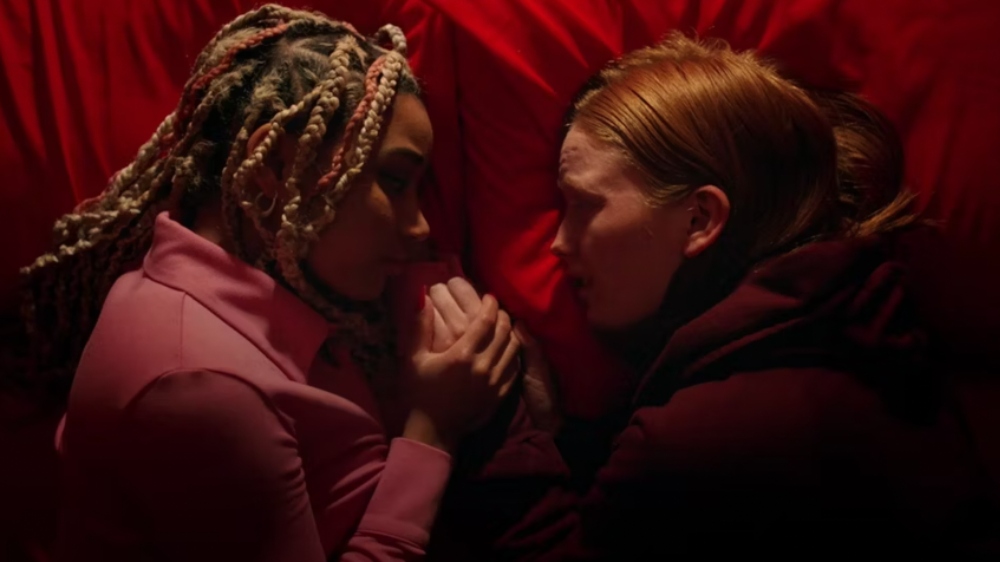
ATL: Tell me about casting Bobbi Salvör Menuez, because I thought they were excellent in this movie. What did you see in Bobbi that made you cast them as Heather?
Castel: Well, I mean, I think, like, really early on in the process, Jae and I were kind of banging around some ideas, and Bobbi’s name came up. And I was aware of Bobbi just from being in the New York film scene and stuff. I was doing a lot of research, watching all of Bobbi’s films, some of which I had seen already and some of which I hadn’t. But I was like, ‘You know, I really feel like this actor is so primed to have center stage and be someone who can take up the screen the whole time.’ Because I feel like there hasn’t maybe been, like, quite that opportunity.
I remember Bobbi’s first reaction after the Sundance screening was feeling a little overwhelmed with seeing themselves onscreen so much, and that being a new experience for them. [But] I just saw this spark. You look for actors who… You can see something in them and see what they can bring to the story. And also, just Bobbi’s own experience and own life story.
And the same with Amandla, as well. I mean, I think they both were coming from just these really interesting, similar experiences or similar perspectives that they’ve had in their own lives, and I loved that convergence between the core creatives — Jae and myself, and Bobbi and Amandla — it was all kind of connecting. We all had parts of ourselves to bring to it, and I think that’s something that can be really powerful in storytelling.
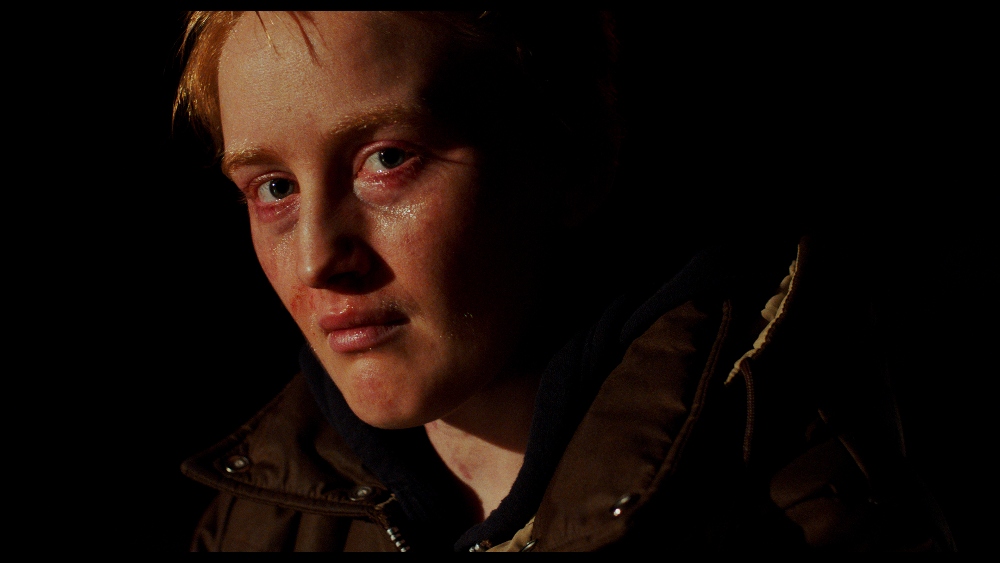
ATL: Jae, you’ve worn a bunch of different hats over the course of your career — in fact, both of you have done a little bit of everything. But with your music career thriving, what inspired you to branch into screenwriting and write your own thing?
Matthews: I actually always wanted to be a screenwriter. I went to school for film, and I think that when you enter into an art program, you’re kind of trying on every hat, and that was the hat that fit the most, and I loved it. And truly, my life has just gone on a different trajectory than expected. After film school, I did start AD’ing, maybe in kind of like the optimistic but lame hope that it would evolve into producing, which would then evolve into being able to put up my own scripts. That is a very unattainable goal, and one that I was slowly starting to understand was maybe not the right journey.
And at the same time, this band I was in and am in started really kind of working and picking up, and now, has since become my career. So I guess the short answer is, like, it’s not really “right now,” and I never actively, like, make life decisions, which maybe I need to. Maybe I need to start figuring out how people are like, “Now is the moment where I have children.”
I’ve never been that type of person, and it could be cool to start really developing that, but I’m really lucky because I wrote this years ago, and Jacqueline and the producers took a real risk in putting it up, so I’m really lucky, but also, strangely, I feel undeserving because you hear about a lot of screenwriters who are fighting forever to get their movie out there, or at least optioned, and it didn’t really shake out that way at all.
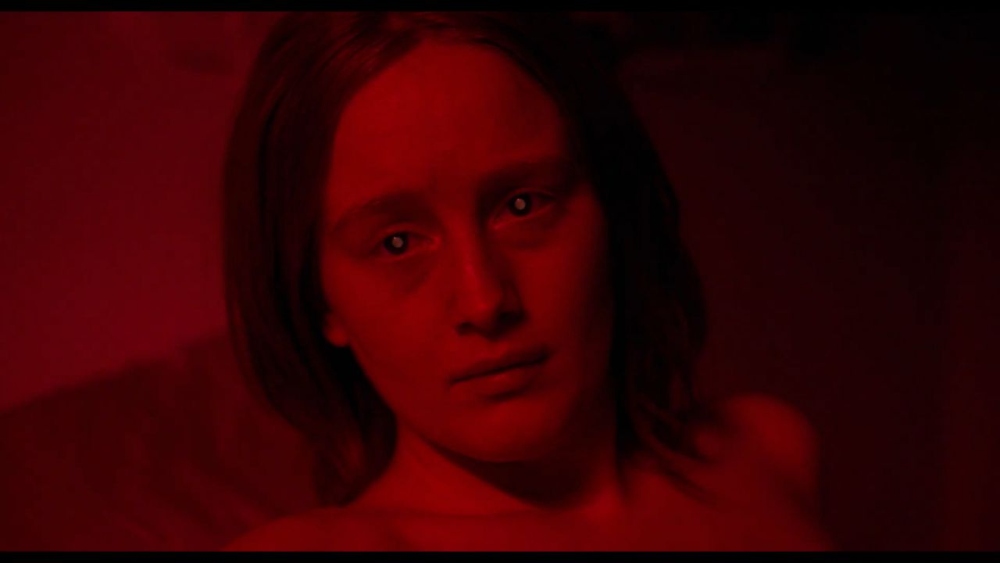
ATL: Jacqueline, I liked your use of the color red in this film. Can you talk about what you were going for in terms of the film’s visual palette, and also about avoiding some of the traditional werewolf movie iconography we typically see?
Castel: Well, first of all, I’m just wild about the color red, and I knew kind of early on that [it] was one of the colors I was going to really push, and I think also, just being in these winter landscapes, that was going to be kind of contrasted with blue. I was really careful not to have any green in there because I was like, “I really don’t want this to feel like Christmas.”
So I kind of found these colorscapes that I really wanted to work with and use as a tool to convey emotion or emotional states, so that was all kind of purposely built in. This was such an interesting process for me because I have always shot all of my own stuff — it just feels really natural and intuitive to me to be behind the camera as I’m directing — so it was like a weird step to be like, “OK, now I have to [cede] back the control and have somebody else in that role.” But I was really fortunate to be working with my DP Bryn McCashin.
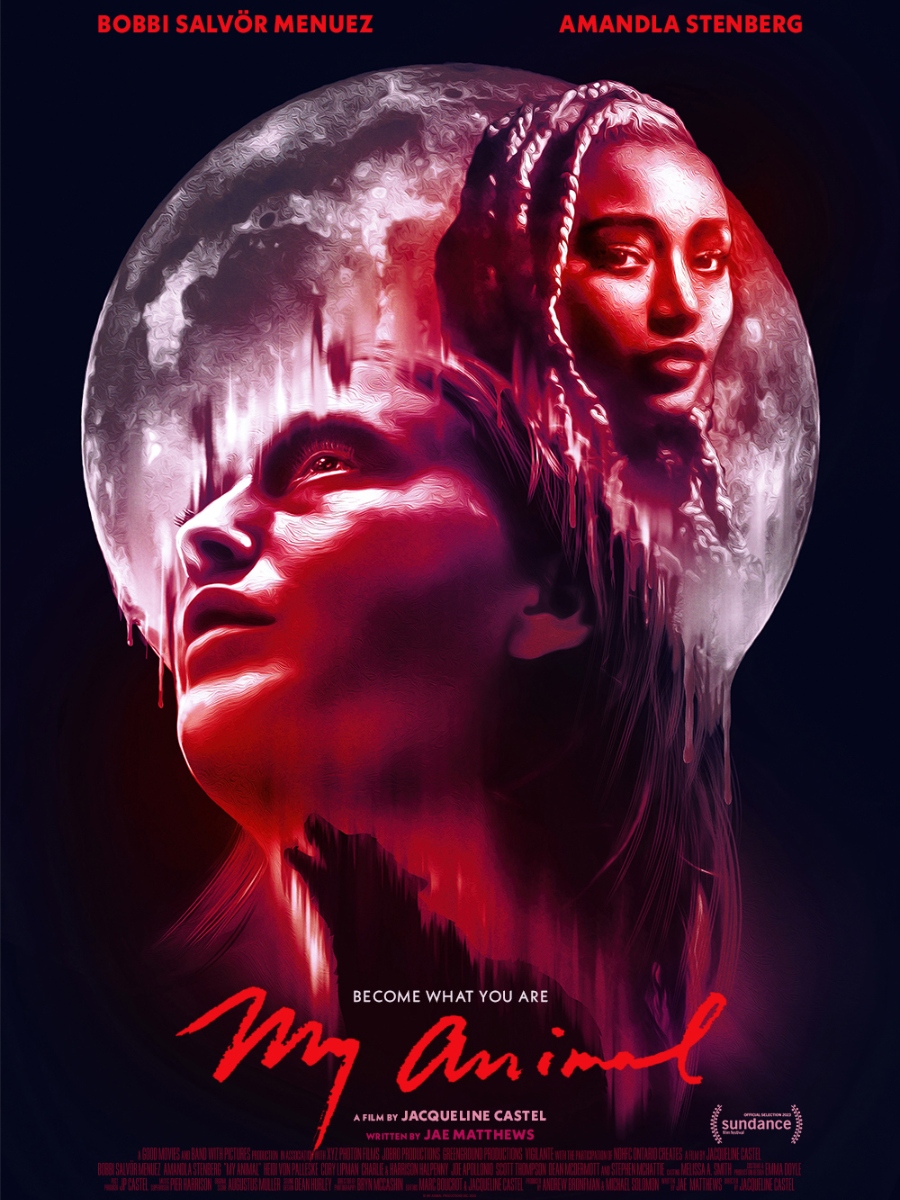
We have kind of a similar style, and we really just talked through a lot of the compositions and a lot of the ways in which we were going to kind of approach the lighting and the colors as its own narrative within the narrative.
I remember that Bryn, at one point, made this chart, and we were talking about this idea of it being, like, its own moon phase in the movie and how that is influencing the characters [as well as] what we see on screen. And I’m also just a huge fan of subjective moviemaking. I like really personal stories and I like characters who are maybe a little unreliable, and you’re just going to be there in their emotional perspective.
So I really wanted to approach building out the character by seeing [things] from their perspective. So, I think with Heather, we have the state of things be more just like a drab kind of existence, but then there are moments of intense love or lust, or anger, and that’s when you dip into these intense color schemes because when you’re young, that’s how emotions wash over you.
I think at any point in your life, that’s how [emotion] washes over you, but it’s most intense when you’re young [and] you don’t know how to handle all the emotional states, and there are all these new things happening to you that you’ve never experienced before. And I think, especially with regard to first love, that’s something that, like, everyone feels so out of control, so I wanted to capture that in terms of how I was creating the film itself.
ATL: I loved the shot of the rose falling onto the ice from the Zamboni. Was that a conscious nod to Beauty and the Beast?
Castel: You know, it’s funny because I wasn’t thinking that at the time. Actually, at the time, I was racing to get that scene. I mean, it was insane. We had, like, 15 minutes to get it before the rink was going to shut down and we were going to go into overtime. And I was like, “No, we’re getting this,” and we were just rushing to get the whole thing. I was adamant about getting that [rose] thrown onto the ground, the close-up.
It was me and my DP and the Zamboni, and Bobbi had learned to ride the Zamboni. It was just, like, four people on the ice trying to get this shot, desperately, as everyone else in the crew was packing up all of their stuff. So it was down to the wire but I was really adamant and I felt really excited and gratified when we got it in the way that I did because I feel like it’s a really nice punctuation.
But I love that connection to Beauty and the Beast because, obviously, the film opens up with the Faerie Tale Theatre opening — Shelley Duvall‘s, like, totally insane children’s series from the ’80s and ’90s that I grew up on in the ’90s. I got to put Klaus Kinski in the movie! And Susan Sarandon! And also, I think it’s referencing Jean Cocteau‘s Beauty and the Beast and all the costume design in that. Even though it’s kind of like this low-budget ’80s TV show, they’re referencing Jean Cocteau, and it’s directed by Roger Vadim, who directed Barbarella, so the whole thing is just so bizarre, I don’t know how that happened. But it’s kind of like that with all those Faerie Tale Theatre episodes. Sorry, I feel like I’m going off on a tangent…
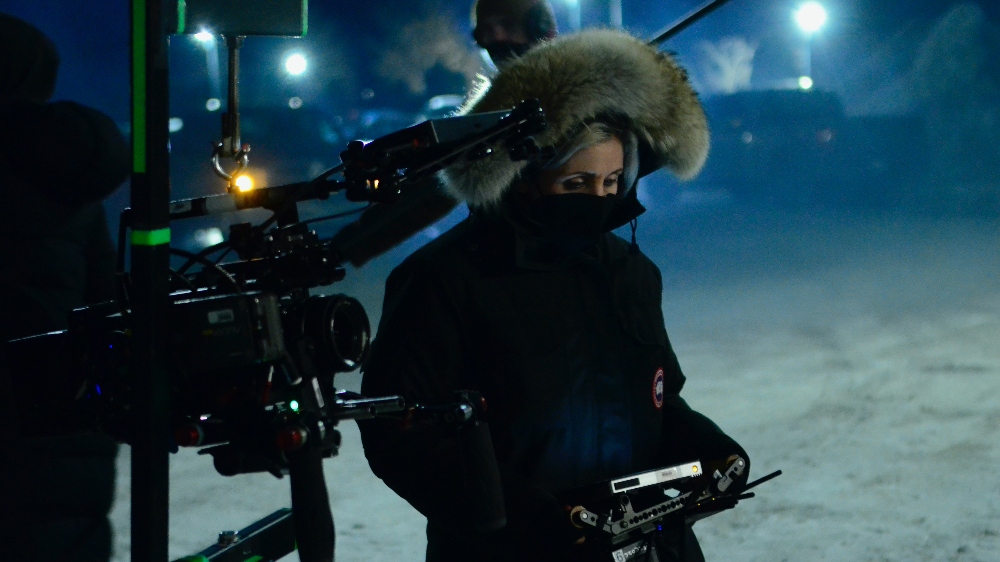
ATL: I’d be remiss if I didn’t ask you both for your thoughts on the strikes, which many had hoped would be over by Labor Day…
Castel: I felt this when we had our L.A. premiere at Outfest. It was the day when the strike was declared by SAG-AFTRA, [and] it had already been in place for the WGA, so obviously, everyone was already impacted by that, but it was a very strange, eerie moment to be in Los Angeles just as that hit and [to] be the first festival that was dealing with that. I remember being really nervous because my cast, last-minute, didn’t get on their flights, and one of our actors, Amandla, was receiving an award that night, which I then had to step in [and receive on her behalf].
So it was terrifying for me because I was really worried about all the politics of it, but I remember, when I talked to somebody about that at the festival, there was just a whole conversation that really made me think about how I think that this is, like, the nexus point of what I feel is going to be a huge labor conversation in the United States, outside of the film industry. I think the film industry is really public, but I think that what’s really interesting about this — there’s the potential for a labor revolution around the corner, from all industries.
Because you see the Teamsters and all these people starting to have that conversation now, and I think that’s kind of directly a result of the pandemic. But I just see it in so many different ways, not just in the film industry, but in so many different creative fields. The conversation about [how] art is valued is a really big one, and there are a lot of fields where it’s really crippling, I think, for artists, so I think these are all really important conversations to be having right now. It’s a tough moment.
Matthews: Yeah, I agree with Jacqueline. I am a screenwriter [but] I’m not a member of the WGA. That’s not really intentional, it’s just more that my career has really been music for the last 10 years, but in hindsight, I will say that there are elements to the strike that are a bummer. Obviously, I want to put movies up and I want people to be financing films, and I do not want independent cinema to disappear, which seems like the most threatened part of the American industry at the moment.
Yet, at the same time, it’s not mutually exclusive, and I feel there are real, real reasons why we need to stand up to the studios. With the advent of AI, I think it’s on the brain because, for musicians, that [has] become this ever-evolving question that everyone’s very freaked out about — knowing that something could replicate my voice and create music with my voice. It’s something indeterminate, but it’s crazy. And I really do hope that, [as] Jacqueline said, there will be a ripple and, like, a revolution that makes us not just cogs in a weird machine that only benefits a small [number] of people.
ATL: What’s next for you both?
Castel: I had a few other projects that I had written or co-written, and you place projects kind of to the side when one starts to move forward, so those are all moving forward as they can right now, and there’s also a new project that I just attached to that’s really exciting and really up my alley that came to me after Sundance, so that’s probably gonna get pushed forward pretty hard once all the strikes lift, so that’s the other thing I’m working on. I’m staying a little tight-lipped about it all… [laughs]
Matthews: I have a feature in the works that is ready to go into production right when the strikes are over. I think it’s an interesting holding pattern that everyone is in right now but I am writing, and my band is… I mean, luckily, music is something that is functional again. COVID was such a strange period for touring musicians, so we will be touring again, probably, next year.
My Animal will be released in select theaters on Friday, Sept. 8, and available to buy on digital platforms on Sept. 15 thanks to Paramount Global Content Distribution.


